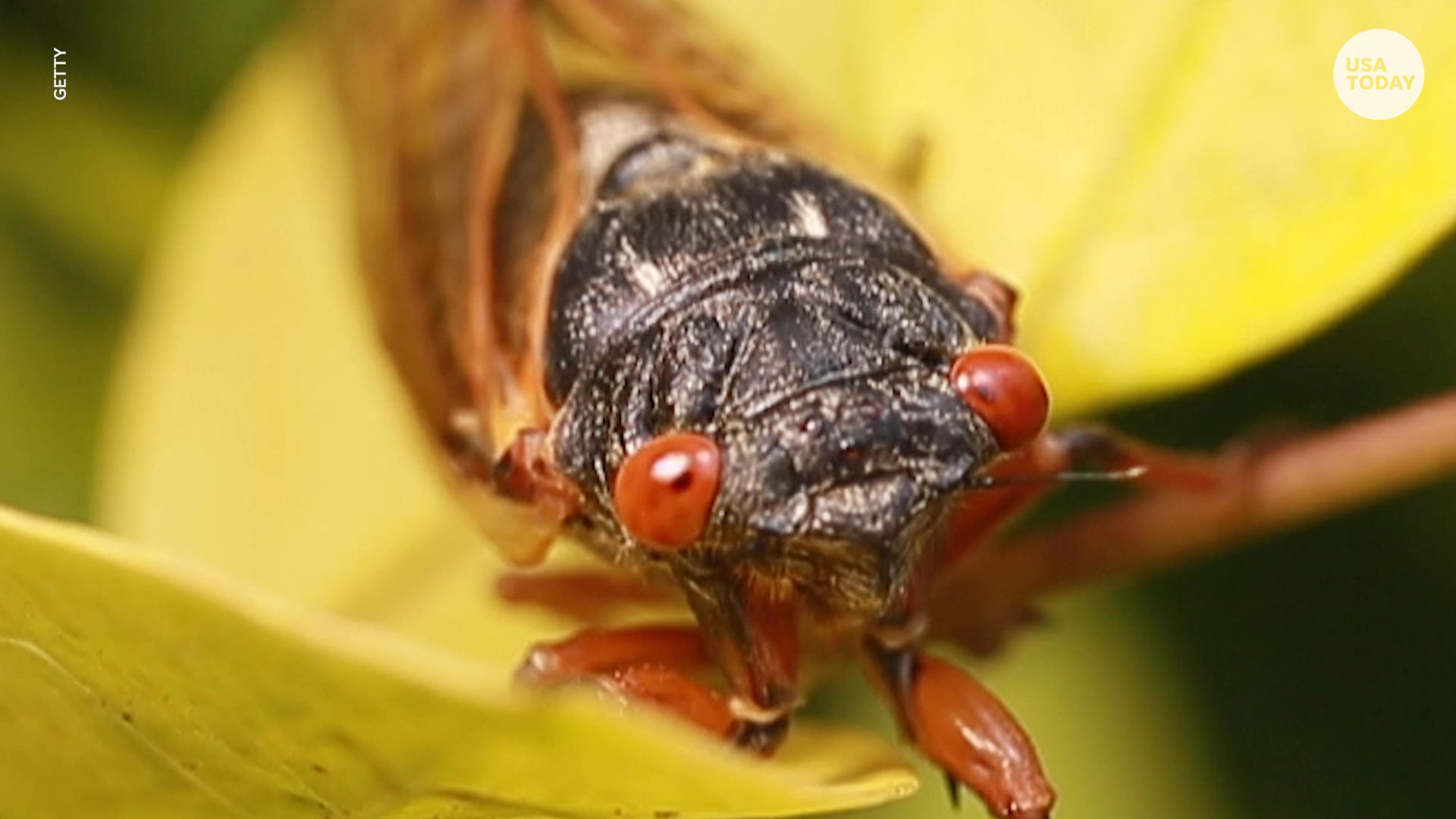Brood X: Why 'trillions' of cicadas set to emerge after 17 years have an ominous sounding name
N'dea Yancey-Bragg | USA TODAY

Brood X, one of the largest broods of cicadas, is set to emerge after 17 years underground this summer.
The bugs have been lurking beneath the surface since 2004, feeding on sap from the roots of plants, according to Michael J. Raupp, emeritus professor of entomology at the University of Maryland. Once they're mature, the "big brood" will emerge in 15 states where they'll spend two to four weeks in late May and early June "courting, mating, flying, driving people crazy, being eaten by everything" including humans like Raupp.
The adults will lay their eggs in trees which will hatch 4 to 6 weeks later in more than a dozen states. Their offspring will head back underground until 2038.
They'll also be making quite a bit of noise. According to Raupp cicadas can emit sounds between 80 and 100 decibels, equivalent to a low flying airplane or a lawn mower.
Brood X periodical cicadas: Underground for 17 years, ready to reemerge and make some noise
Here's everything you need to know about Brood X:
What is a brood?
Periodical cicadas emerge in huge groups called broods. There are 12 broods of cicadas that emerge every seven years and three broods that emerge every 13 years, Raupp said.
Two broods appear to have gone extinct, including Brood XI, which was last observed in Connecticut in 1954. Almost every year somewhere in the country, a periodical brood will emerge.
"A brood is a geographically distinct massive emergence of periodical cicadas that happens either once every 13 years or 17 years," Raupp said. "There are several of these broods depending on location and depending on year."
Why is it called "Brood X"?
Although the name may sound ominous, the story behind the name is fairly simply. Broods are differentiated with Roman numerals, and Brood X is the tenth brood experts have tracked.
What's special about Brood X?
Brood X is one of the largest and most broadly distributed groups of periodical cicadas. Raupp said they can be found from northern Georgia to New York, west to the Mississippi River and in the Midwest. He estimated there can be as many as 1.5 million cicadas per acre bringing the total brood population into the trillions.
"A lot of people are going to see cicadas," he said.
Why do they emerge every 17 years?
Why cicadas spend so long underground is "one of the big mysteries in biology," according to Raupp, but their "very unique and very bizarre" life cycle is likely a strategy to avoid predators.
Cicadas are larger than many of their insect relatives and their food source is nutrient poor, which means they need to spend a long time developing, Raupp said. Being larger allows them to produce more offspring which is key for "predator satiation."
"You’re going to produce so many progeny that are emerging simultaneously, synchronously you'll fill all the bellies of any predator that wants to eat those things and there's still going to be enough left over to perpetuate the species," Raupp said.
Raupp added that their long life span also helps them avoid predators who don't live long enough to remember they exist.
Are cicadas dangerous?
Raupp said cicadas don't pose a threat to humans and instead offer a "spectacular teaching moment."
"They're not going to harm your pets or carry away small children," he said, although he cautioned pet owners not to let their animals overindulge.
But if the sudden emergence of trillions of insects is too much to handle, Raupp recommends getting out of the area where Brood X can be found.
Mature trees should see no significant impact, but Raupp said those considering transplanting small saplings should wait to do so until the fall to avoid damage to small trees from cicadas laying eggs. He also recommended using 1 cm mesh nets over young trees, but warned people not to use pesticides which could be ineffective and harmful to other species.
Follow N'dea Yancey-Bragg on Twitter: @NdeaYanceyBragg
Via PakapNews